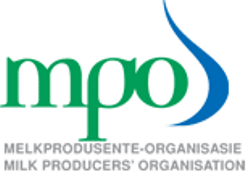
by Johan van den Berg
Independent agricultural meteorologist (MScAgric, Agricultural meteorology, UFS)
Important issues:
- The winter of 2020 continued, and frost damage occurred in the last week of September. Below-average temperatures are still possible until the end of October, but frost is not expected for this season.
- La Niña and favourable sea surface temperatures in the Indian Ocean are still on track for good summer rainfall conditions.
1.Current conditions
Frost and low temperatures persisted over much of South Africa. Mild to severe frost in the last week of September caused damage to grapes, fruit, nuts, potatoes, and early planted winter wheat in parts of the Free State, Northern Cape, and North West. These occurrences are on the later side of the expected spectrum for frost occurrences.
The first significant summer rainfall was recorded in the first days of October with Vrede in the Free State at more than 40 mm, Warden at more than 30 mm, and Bothaville at 20 mm. Rain was also recorded in Marble Hall (17 mm), Witbank (10 mm), and Bethal (15 mm) and Mokopane in Limpopo recorded 30 mm. Grahamstown in the Eastern Cape recorded about 30 mm, Port Elizabeth 25 mm and Graaff-Reinet in the Karoo 22 mm. Up to 50 mm was recorded in parts of KwaZulu-Natal.
Significant rainfall still occurred in the winter rainfall area in September, resulting in very favourable production conditions for winter grain production. The relatively low temperatures were also positive for production conditions for winter grains.
The intense drought conditions continued in parts of the Northern Cape, although very good rainfall occurred in the southwestern parts in districts like Springbok, Garies and Kamieskroon, releasing these areas from the grip of the drought. Areas that are still experiencing disaster drought conditions are Pofadder, Kenhardt, Prieska, Van Wyksvlei, Carnavon, and other districts in the central to southern parts of the Northern Cape. Most of the Kalahari (to the north of Upington) are also very dry with below-average rainfall for nearly a decade. The northern interior of the Western Cape as well as parts of the Eastern Cape are also still in the grip of the drought.
The levels of surface water are critical in some larger storage dams like the Vaal Dam, with only about 33% of full capacity compared to 55% during the same period last year. The Tzaneen Dam supplying water to the Letaba irrigation valley is at less than 10% of full capacity and the level is dropping rapidly. In the Eastern Cape, the Kouga Dam is at about 8% compared to nearly 40% last year and the Nelson Mandela Metropole is rapidly closing in on Day Zero if replenishment is not to happen within weeks. It also threatens the water for the Gamtoos irrigation area, which is a very important citrus exporting area. The level of storage dams in the Western Cape is favourable, with the Theewaterskloof Dam overflowing for the first time in many years. The important Clanwilliam Dam supplying water to Citrusdal and the surrounding irrigation areas is also at 100% of full capacity after being below 10% in May 2020.
The water level in Lake Kariba in Zambia is at 30,5%, the Katze Dam in Lesotho at 24,3% and Hardap Dam in Namibia at 35%.
2.ENSO and the Indian Ocean
2.1 El Niño–Southern Oscillation (ENSO)
Sea surface temperatures in the Niño-areas were all indicating solid La Niña values at the end of September. The Australian Bureau of Meteorology favours a medium to strong La Niña event to last for most of the Southern Hemisphere summer of 2020/2021. The La Niña is now well established and there is a >80% certainty that it will remain in place until about the fall of 2021. Sea surface temperatures in the important Niño 3 and 4-areas are about 1 °C lower than average with forecasts indicating that it will probably cool down to about 1,5 °C below average.
The Southern Oscillation Index (SOI) that is a measure of the interaction between surface conditions is in a consistently positive phase of the SOI system. The La Niña development and the SOI reacting to the development this early in the summer season is highly significant for rainfall.
2.2 Indian Ocean
Further cooling of the southwestern Indian Ocean took place in September 2020 with warming in the central to eastern parts of the Ocean. This is favourable for the continued development of a negative phase of the Indian Ocean dipole (IOD).
3.Rainfall and climate
3.1 Summer rainfall area
Rainfall: The presence of a La Niña phenomenon associated with a negative phase of the IOD is positive for summer rainfall. Although a La Niña event is usually responsible for a normal to later than normal start of the summer rainfall season, the mid- to second part of the summer is wet to very wet.
Similar seasons in history with both La Niña and a negative IOD were:
1974/1975, 1975/1976, 1988/1989, and 1998/1999.
The previous strong La Niña from 2010 to 2012 also resulted in above-average rainfall although the IOD was in a weak negative to neutral phase.
The similar years as mentioned above also resulted in above-average rainfall in the extreme western interior of the country. These parts of the country are currently still in the grip of a drought since about 2012 and it is likely that the drought will be broken in these areas in the months to come.
Temperature
Minimum temperatures are likely to remain below average until about the end of October. Average to above-average temperatures can be expected over the central to western and the extreme northern interior for the last part of October and November until the start of the rainy season. There is a high probability for a below-average number of heat units and farmers are advised not to plant summer crops too late. Expected excessive rainfall in January to March can also favour early plantings.
3.2 Winter rainfall area
It is expected that the rainfall pattern will shift from the southwestern Cape towards the southern, eastern, and northeastern parts of the country in October. Rain is still possible over the winter rainfall area with cold fronts visiting the southern parts of the country. Light rain is possible on 7–8 October, 15–16 October, and in the last week of October.
3.3 Namibia
The current status of the La Niña and the IOD is also very positive for above-average rainfall for mid- to late summer, with a high risk for flooding in lower-lying areas. Short- to medium-term outlooks for rainfall indicate possible light rainfalls in the second week of October, but the start of the rainy season is likely to occur only in the second part of November.
It is expected that the very dry southern to southwestern parts of Namibia will also experience sufficient rainfall to break the drought, but only towards December or in the second part of the summer.
4.Summary and conclusion
- Below-average temperatures with late frost still occurred and caused crop damage in the central to southern interior. Below-average temperatures are likely to remain dominant until the end of October, but more frost is not expected.
- Both the ENSO and the IOD are likely to produce favourable rainfall conditions for the summer of 2020/2021, especially the central to western parts of the summer rainfall area. There is a higher-than-average risk for flooding in the second part of summer.
- Surface water conditions are in a favourable state for the first time in about five to six years for the Western Cape. However, the Vaal Dam, dams in the Eastern Cape and large storage dams in neighbouring countries are at very low levels and are still a matter of concern.
5.Disclaimer
The author or Santam or any other parties mentioned in this document do not warrant the accuracy, completeness, or reliability of any information in this document. Any actions or decisions based on the information in this document is strictly at your own risk and we will not be liable for any losses or damages in connection with the use of information stated in this document.
6.Contact details
Email: wjvandenberg1959@gmail.com
Cell: 082 374 4692
This post contains content and/or links to websites that belong to third parties unrelated to us. By making these links available, we are not endorsing third-party websites, their content, products, services or their events. The MPO seeks to protect the integrity of its website and newsletter and links used in it, and therefore welcomes any feedback.
Published on Thursday, 8th October 2020 - 11:32
Recent Posts
disclaimer









